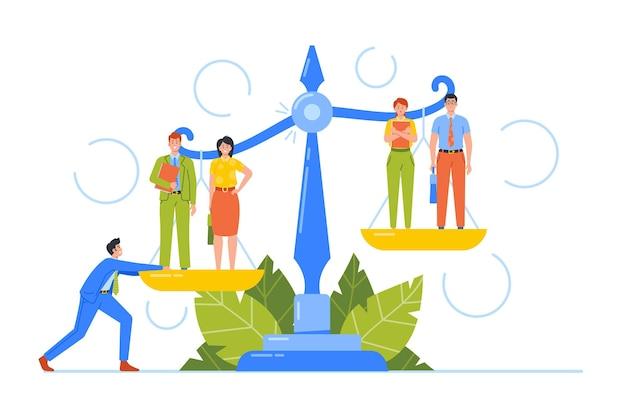Distributed computing has become an integral part of our modern technological landscape. From Amazon’s cloud infrastructure to the interconnectedness of the Internet itself, distributed systems are everywhere. But what exactly does it mean, and what are the benefits and drawbacks of this approach? In this blog post, we will delve into the world of distributed computing, exploring its advantages over centralized systems and examining the potential challenges that come with it.
To begin with, let’s clarify what we mean by a distributed system. In simple terms, it is a network of interconnected computers that work together to perform a common task. Unlike a traditional central processing unit (CPU), distributed systems harness the power of multiple computers, or nodes, distributed across different locations. This distributed architecture offers several advantages over centralized systems. However, it also poses certain complexities and obstacles that need to be carefully considered and managed.
Join me as we explore the benefits and drawbacks of distributed computing, understand its significance in today’s digital landscape, and discover why it has become increasingly crucial for various industries. So, let’s dive into the world of distributed computing and unravel the intricacies of this innovative approach to processing and storing data.

What are the Advantages and Disadvantages of Distributed Computing
Distributed computing, also known as parallel computing or even “the more the merrier” approach, has its fair share of advantages and disadvantages. Let’s take a closer look at what makes this style of computing both a blessing and a curse.
Advantages of Distributed Computing
Improved Performance & Scalability
Distributed computing allows for tasks to be divided and allocated to multiple machines or servers, boosting performance by tackling them simultaneously. This means faster processing times and improved scalability, as resources can be easily added or removed as needed. Think of it as having a team of synchronized swimmers, each playing their part to achieve excellence.
Enhanced Reliability & Fault-tolerance
With distributed computing, failure in one part of the system doesn’t have to mean catastrophe. By spreading the workload across multiple machines, if one machine goes down, others can pick up the slack, ensuring the system remains operational. It’s like having a whole bunch of backup dancers who can seamlessly step in when one of them accidentally trips over their own feet.
Cost Efficiency & Resource Utilization
By utilizing distributed computing, you can make the most efficient use of available resources. Instead of relying on a single, powerful machine, you can harness the power of multiple smaller machines, often resulting in cost savings. It’s like throwing a potluck party instead of footing the bill for a fancy catering service!
Disadvantages of Distributed Computing
Complexity & Management Overhead
While distributed computing can be a powerful tool, managing and coordinating a distributed system can be quite complex. Ensuring communication between different machines, handling data synchronization, and dealing with potential failures can add a layer of overhead. It’s like being the ringmaster in a circus, trying to keep all the performers in sync without anyone tumbling off the tightrope.
Network Dependency & Latency Issues
In distributed computing, the performance is highly dependent on the network connecting the machines. Network latency can hinder communication and slow down data transfer between nodes, impacting the overall system performance. It’s like being stuck in a traffic jam on your way to the party, causing delays and making everyone impatient.
Security & Vulnerability Concerns
With distributed computing, there is an increased risk of security vulnerabilities. Each additional machine introduces a potential entry point for attackers. Ensuring that proper security measures are in place and managing access control can be a daunting task. It’s like trying to throw a party while keeping a watchful eye on every guest to make sure they don’t sneak off with the silverware.
In conclusion, distributed computing offers numerous advantages such as improved performance, scalability, reliability, and cost efficiency. However, it also presents challenges such as complexity, network dependency, and security concerns. Like most things in life, it’s a trade-off. But if managed correctly, distributed computing can be a powerful approach to boost performance and tackle tasks with a synchronized army of machines.
Note: This article does not endorse synchronized swimmers hosting potluck parties, tightrope performances in traffic, or party guests with silverware-stealing tendencies. It’s all just for the sake of metaphorical amusement!

FAQ: Advantages and Disadvantages of Distributed Computing
What are the advantages and disadvantages of distributed computing
Distributed computing offers several benefits, but it also comes with its share of drawbacks. Let’s explore the advantages and disadvantages in detail:
Advantages of Distributed Computing
Enhanced Performance and Scalability
Distributed computing allows for the parallel processing of tasks across multiple interconnected computers. This means that work can be divided among several machines, resulting in faster processing times and improved performance. Additionally, distributed systems can easily scale by adding more machines, accommodating growing workloads without significant performance slowdowns.
Improved Fault Tolerance
One key advantage of distributed computing is its ability to withstand failures. Since a distributed system consists of multiple interconnected computers, if one machine fails, the others can continue to function, ensuring uninterrupted service. This fault tolerance is particularly important in critical applications where even a short disruption can have serious consequences.
Increased Reliability and Availability
With distributed computing, services and resources can be replicated across multiple machines or data centers. This redundancy minimizes the risk of downtime due to hardware failures, network issues, or natural disasters. As a result, distributed systems can provide higher reliability and availability compared to centralized systems.
Disadvantages of Distributed Computing
Complexity
Distributed systems are inherently more complex than centralized systems. Coordinating the communication, synchronization, and data sharing among multiple machines requires careful design and implementation. This complexity can make building, managing, and debugging distributed systems more challenging, as compared to simpler centralized systems.
Increased Communication Overhead
In a distributed system, communication between machines is necessary for sharing data and coordinating tasks. However, network communication introduces additional latency and bandwidth requirements. The increased communication overhead can slow down system performance, especially if the network becomes congested or experiences delays.
Security and Privacy Concerns
Distributed computing introduces additional security challenges. Securing data transmission, ensuring access control across multiple machines, and protecting against unauthorized access become more complex. Additionally, the distribution of data across multiple locations raises privacy concerns, as sensitive information may need to be shared or replicated across different machines.
Miscellaneous FAQs
Is Amazon a distributed system
Yes, Amazon is an excellent example of a distributed system. It uses a vast network of servers and data centers spread across different regions worldwide. This allows Amazon’s services to handle high volumes of traffic, provide fault tolerance, and ensure reliable and scalable customer experiences.
Is the Internet a distributed system
Yes, the Internet is a distributed system on a global scale. It consists of countless interconnected computers and networks spread across the world, each contributing to the overall functioning of the Internet. This distribution allows information to flow across different nodes, enabling us to access websites, send emails, and perform various online activities.
What is an example of a distributed system
A popular example of a distributed system is a peer-to-peer (P2P) file-sharing network. In a P2P system, files are shared directly between individual devices, such as computers or smartphones, without relying on a central server. Each device contributes its bandwidth and storage capacity to enable file sharing.
What are the types of distributed systems
Distributed systems can be classified into different types based on their architecture and how they handle tasks. Some common types include client-server architectures, peer-to-peer networks, distributed databases, and grid computing systems. Each type has its own strengths and use cases.
What are the advantages of distributed systems over centralized systems
Distributed systems offer several advantages over centralized systems, including enhanced performance and scalability, improved fault tolerance, increased reliability and availability, and better resource utilization. By distributing tasks and data across multiple machines, distributed systems can achieve higher efficiency, better handling of failures, and increased overall system resilience.
Why do we need distributed processing
Distributed processing allows us to tackle larger and more complex problems by harnessing the power of multiple machines. It enables parallel execution, speeding up computations and processing large amounts of data. Distributed processing is essential in various domains, including scientific research, data analysis, and artificial intelligence.
What exactly is a distributed system
A distributed system is a network of interconnected computers that work together as a single coherent system. Instead of relying on a central server, tasks and data are distributed across multiple machines, enabling parallel execution and resource sharing. Distributed systems are designed to offer improved performance, fault tolerance, and scalability compared to centralized systems.
What defines a distributed system
A distributed system is characterized by the following key features:
- Multiple Interconnected Computers: It comprises multiple machines connected through a network, working together as a unified system.
- Resource Sharing: The system allows sharing of computing resources, data, and services among the machines.
- Communication and Coordination: Machines in a distributed system communicate and coordinate their actions to achieve desired outcomes.
- Parallel Processing: Tasks can be divided and executed in parallel across multiple machines, enhancing performance and efficiency.
What are the three advantages of distributed processing
Distributed processing offers three main advantages:
- Improved Performance: By dividing tasks among multiple machines, distributed processing enables parallel execution, reducing processing time and enhancing overall system performance.
- Fault Tolerance: Distributed systems can continue functioning even if individual machines fail, ensuring uninterrupted service and minimizing disruptions.
- Scalability: Adding more machines to a distributed system allows for easy scaling, accommodating growing workloads without sacrificing performance.
Now that you have a better understanding of the advantages and disadvantages of distributed computing, you can consider whether it is the right approach for your specific needs. Distributed systems offer remarkable capabilities, but they also require careful consideration of their complexity and potential challenges. So, choose wisely, and embrace the power of distributed computing in this digital era.
